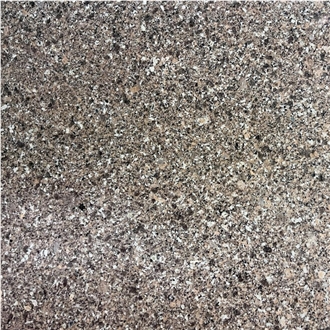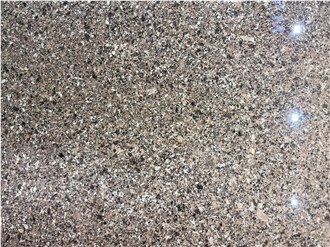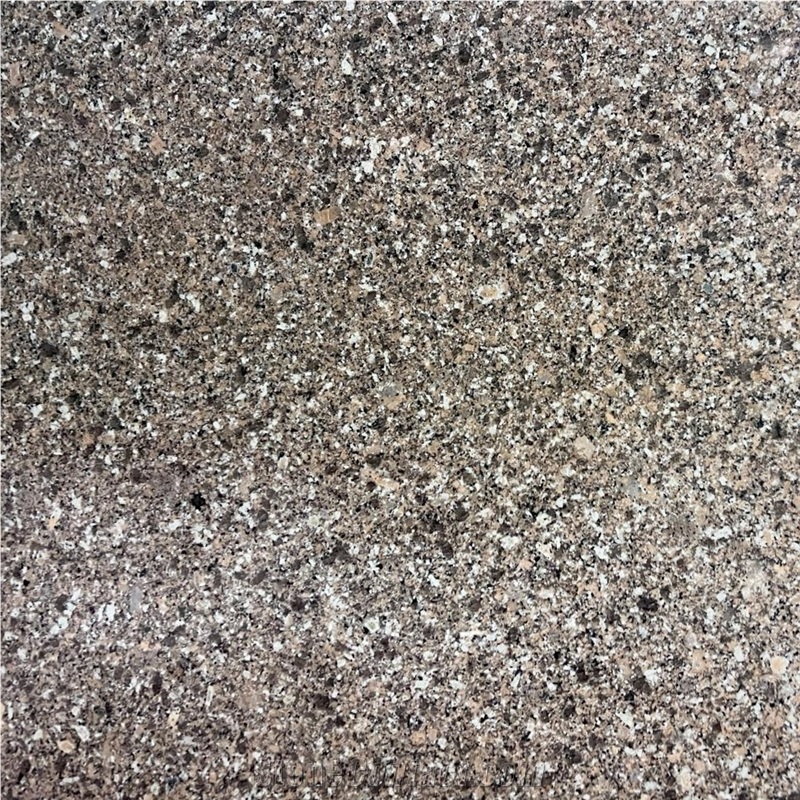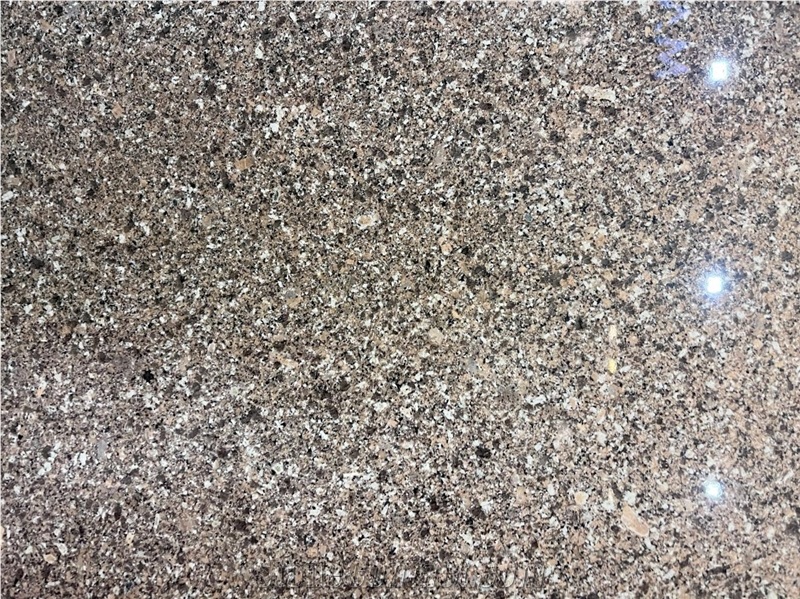Thrace Perla Granite
 Turkey
(Kirklareli)
Turkey
(Kirklareli)
Thrace Perla Granite is a captivating natural stone known for its unique combination of colors and distinctive grain patterns. Quarried in the Kirklareli district of Turkey, this granite offers a range of visual elements that make it a popular choice for various interior and exterior applications. Here's a detailed description of Thrace Perla Granite:
Medium Grain Texture: Thrace Perla Granite features a medium-grain texture, which means that its mineral grains are intermediate in size. This texture gives the granite a balanced and consistent appearance, making it suitable for a variety of design styles.
Brown Base Color: The primary color of Thrace Perla Granite is a rich and warm brown. This earthy hue serves as the foundation for the stone's overall aesthetic. It adds a sense of warmth and grounding to spaces where the granite is used.
Red, Black, and Gray Grains: What sets Thrace Perla Granite apart is the presence of scattered grains in varying shades of red, black, and gray. These contrasting colors create a visually captivating mosaic of colors and provide depth and character to the stone's surface.
Origin: Thrace Perla Granite is quarried in the Kirklareli district of Turkey. This region is known for its rich geological diversity and the production of high-quality natural stones.
Applications: Due to its striking appearance and durability, Thrace Perla Granite is commonly used in a range of applications. It is often seen as countertops, vanity tops, flooring, wall cladding, and even outdoor projects such as facades and paving. Its versatility allows it to complement various architectural styles.
Versatility: Thrace Perla Granite's rich color palette and unique grain patterns make it a versatile choice. It can be integrated into both modern and traditional design schemes, adding depth and character to interiors and exteriors.
Maintenance: Like all natural stones, Thrace Perla Granite benefits from proper sealing and regular maintenance to preserve its beauty and protect it from staining or damage.
In summary, Thrace Perla Granite is a medium-grain natural stone characterized by its rich brown base color and contrasting red, black, and gray grains. Quarried in Turkey, it is highly versatile and well-suited for a wide range of architectural and interior design applications. Its unique color combination adds depth and visual interest to spaces, making it a popular choice among designers and homeowners.

Are there color variations of Turkey's Thrace Perla Granite?

How much does Thrace Perla Granite curb weight per foot?
Curb weight can vary depending on the thickness and dimensions of the granite, therefore its best to contact the manufacturer or supplier directly for accurate information.

Can Turkey's Thrace Perla Granite be used exterior applications in hot climates?

How thick should Thrace Perla Granite cobblestone be for a driveway?

Can Turkey's Thrace Perla Granite be used in landscaping?

How much does Thrace Perla Granite kerbstone weight per meter?

How can I cut Thrace Perla Granite cobbles?

Which sink is better Thrace Perla Granite or stainless steel for kitchen?

What is the coefficient of friction of Leathered Turkey's Thrace Perla Granite tiles?

How much does a Thrace Perla Granite cobblestone weight?

What are the different types of Thrace Perla Granite curbs?

What are the common surface treatments of Thrace Perla Granite cobblestones?

How long does a Thrace Perla Granite sink last?

Can Turkey's Thrace Perla Granite be used in a bathroom?

Is it better to cut Thrace Perla Granite wet or dry?

Should I do undermount sink with Thrace Perla Granite?

What is the best thickness for Thrace Perla Granite bar countertops?

What is the difference between Thrace Perla Granite cobbles and pavement tiles?

How many square meter does 1 ton of Thrace Perla Granite cobblestone cover?

Can I cut Thrace Perla Granite tiles myself?

Is Thrace Perla Granite good for a bathroom vanity top?

Is Turkey's Thrace Perla Granite an expensive stone?

What is the disadvantage of Thrace Perla Granite sink?

What are the common sizes of Thrace Perla Granite cobble stones?

What size is a Thrace Perla Granite cobblestone?

How thick is Turkey's Thrace Perla Granite slabs?

Is Thrace Perla Granite cobblestone slippery when wet?

How can I clean between Thrace Perla Granite cobblestones?

What is the sand between Thrace Perla Granite cobblestones?

Do Thrace Perla Granite sinks crack easily?

How many square feet does 1 ton of Thrace Perla Granite cobblestone cover?

What is the difference between Thrace Perla Granite cobbles and paving setts?

Why are cobblestones called cobblestones?

How standard thick is a Thrace Perla Granite curbstone?

Is it Thrace Perla Granite kerbstone or curbstone?

Can Turkey's Thrace Perla Granite be used outdoors?
The request includes: 1. surface finished, size 2. quantity required










